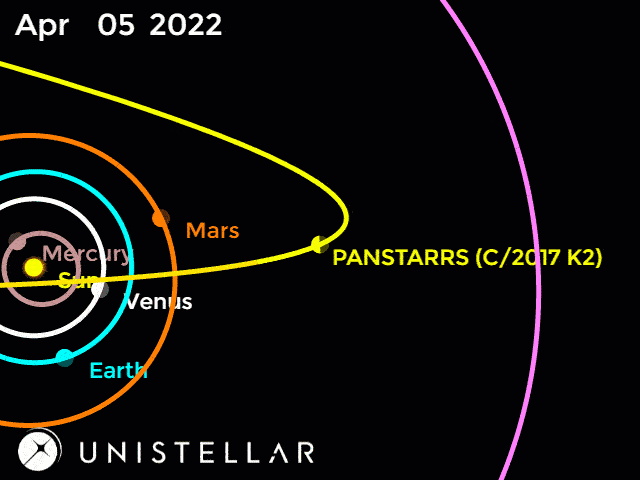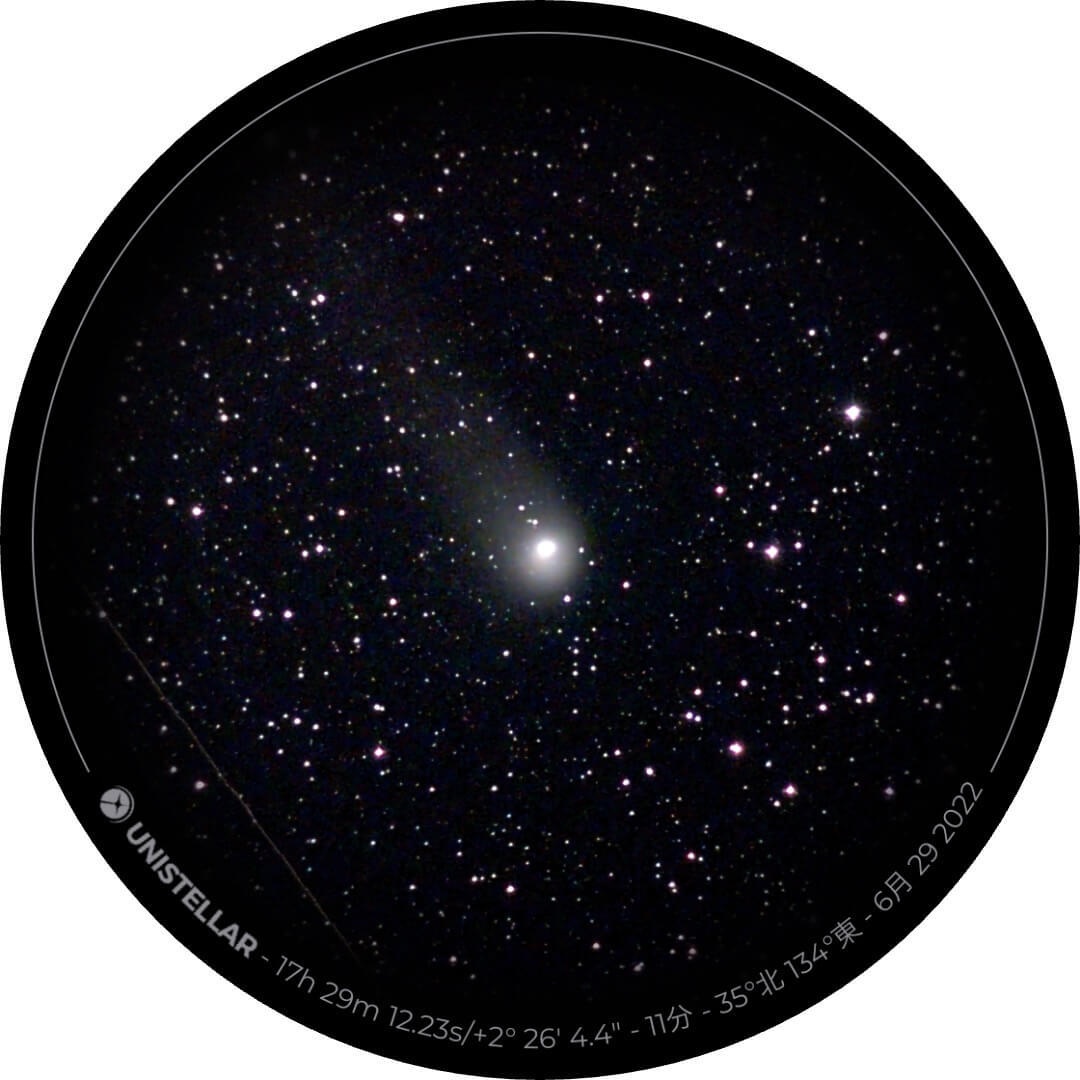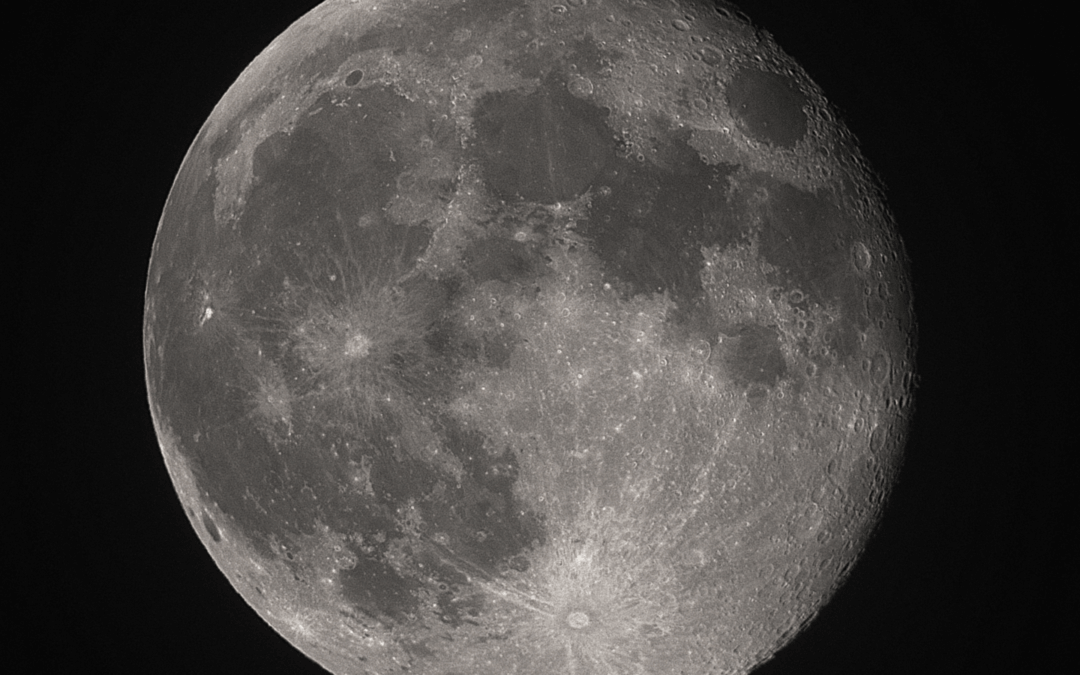There’s a remarkable comet passing near to Earth right now, and you can find it! Comet C/2017 K2 PanSTARRS is a ball of ice and dust estimated to be around 11 miles wide. It likely started its journey in the Oort Cloud, a distant region of the solar system inhabited by comets, asteroids and minor planets. The comet was found by astronomers in 2017 when it was still out beyond Saturn.
Comet K2 passed by Earth on July 14 on its way toward the Sun, which makes now the perfect time to observe this stunning object. But grab your observations while you can! Comet K2 is on a hyperbolic orbit, meaning it will leave the solar system entirely after it loops around the Sun.

Credit: NASA
Unistellar is gathering amateur astronomers to make observations of comet K2 at the same time to build a SUPER IMAGE:
- on July 21st and July 28th from North America at 23h00 local time, from Europe at 23h00 local time and from Japan at 21h00 local time
- on August 4th and August 11th from Oceania at 20h00 local time
By observing together, we’ll gain new insights into the comet’s color, shape and orbit. With enough observations, astronomers at the SETI Institute will be able to combine data from Unistellar Citizen Astronomers into a special SUPER IMAGE. We already made one of these special images of Comet Atlas, revealing subtle colors and precise details, and we’re excited to try it again.
Comets are some of the coolest objects to hunt in the solar system, in part because of their long tails of ice and dust. When a comet gets closer to the Sun, the ice on its surface turns directly from a solid to a gas, a process called sublimation. These tails can stretch for incredible distances — comet K2’s tail is estimated to be almost 500,000 miles long. This comet’s tail holds another mystery as well. It began forming when comet K2 was still far out from the Sun, farther than almost any comet seen before. Some early images of the comet suggest it may have had a tail when it was still more than two billion miles from the Sun, outside the orbit of Uranus.

Single observation by mr Masao
Here’s how you can observe C/2017 K2 with your Unistellar telescope:
This comet is already in the Unistellar App, making it easy to find. Inside the app, follow the HowTo Guide for: “A. The Comet target is in the Unistellar app’s database.”
Once you’ve found the comet with your eVscope, observe comet K2 at your recommended local time for 10 minutes with the Enhanced Vision mode and then another 20 minutes with the scientific mode. In the Recording field, enter the following information: Exposure time: 3971 ms / Gain: 25 dB / Record Duration: 20m00s.
At the end of the acquisition, record a dark frame with the dust cap on. Once your data has been uploaded, contact us through this Observation Report.
Further readings
3 Reasons to observe this month
Every month, discover three unmissable celestial events to observe with your Unistellar telescope.
Observing Eclipses on Jupiter: Cosmic Spectacles Through a Telescope
The latest Unistellar App Update, version V3.0, is now live. Explore a smooth stargazing experience !
Unistellar Community Included In Multiple Scientific Papers
Did you know Unistellar Citizen Astronomers are often cited in published scientific papers? Find out how you can contribute too!
What Are the Names of All the Full Moons in 2024?
Discover the enchanting names of the full moons in 2024. Delve into the unique character of each lunar spectacle and embrace the allure of the night sky.
New Unistellar App Update: Version 3.0
The latest Unistellar App Update, version V3.0, is now live. Explore a smooth stargazing experience !
What to Observe This November: Open Star Clusters and More
These Halloween deep-sky objects will add some light to those dark, spooky nights. Treats, tricks, and telescopes await!






